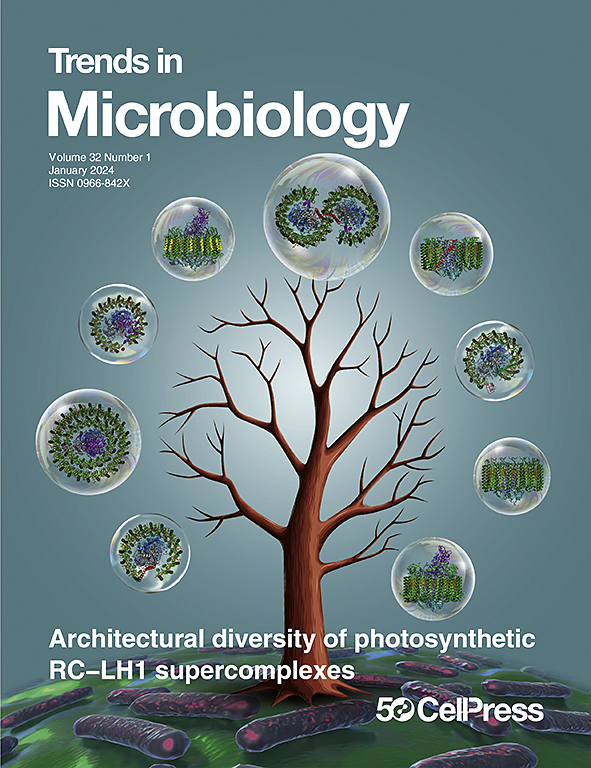蛋白质聚集体的凝固加深了细菌的休眠。
IF 14
1区 生物学
Q1 BIOCHEMISTRY & MOLECULAR BIOLOGY
引用次数: 0
摘要
细菌可以以不同的休眠状态存在,持续者和可存活但不可培养的细胞(vbnc)构成了两种被认为有助于感染的模式。最近,Bollen和他的同事们发现,细胞内蛋白质聚集的状态会影响单个细菌的休眠深度,凝固使它们进一步进入静止状态。本文章由计算机程序翻译,如有差异,请以英文原文为准。
Solidification of protein aggregates deepens bacterial dormancy.
Bacteria can exist in different states of dormancy, with persisters and viable-but-nonculturable cells (VBNCs) constituting two modes thought to contribute to infections. Recently, Bollen and colleagues discovered that the state of protein aggregates inside cells impacts the depth of dormancy in individual bacteria, with solidification pushing them further into quiescence.
求助全文
通过发布文献求助,成功后即可免费获取论文全文。
去求助
来源期刊

Trends in Microbiology
生物-生化与分子生物学
CiteScore
25.30
自引率
0.60%
发文量
193
审稿时长
6-12 weeks
期刊介绍:
Trends in Microbiology serves as a comprehensive, multidisciplinary forum for discussing various aspects of microbiology, spanning cell biology, immunology, genetics, evolution, virology, bacteriology, protozoology, and mycology. In the rapidly evolving field of microbiology, technological advancements, especially in genome sequencing, impact prokaryote biology from pathogens to extremophiles, influencing developments in drugs, vaccines, and industrial enzyme research.
 求助内容:
求助内容: 应助结果提醒方式:
应助结果提醒方式:


